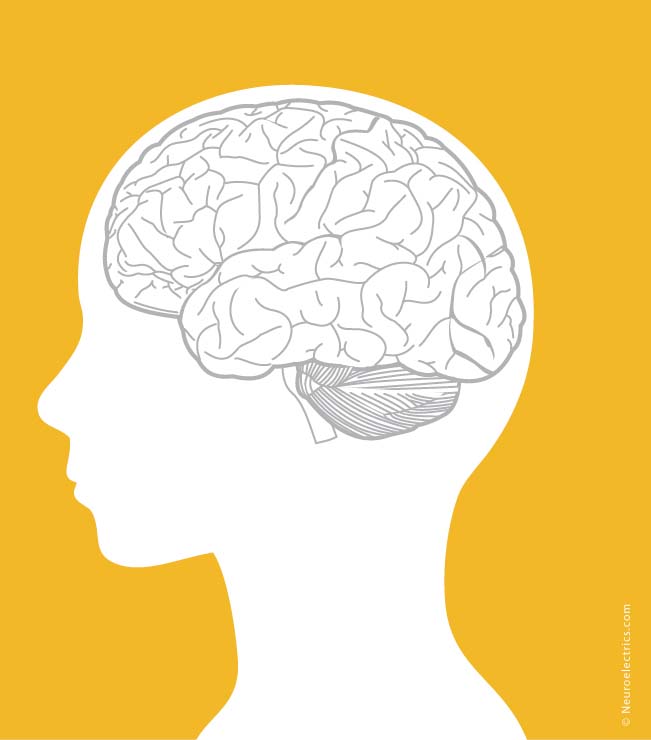Brain-Computer Interaction (BCI) based technology is thriving and has the potential of spreading into society by addressing the needs of various user groups under different application scenarios. Wolpaw and Wolpaw (2012) identified the five principal BCI scenarios or application types that may have evolved so far, namely, replace, restore, improve, supplement and enhance.
Communication is perhaps the most fulfilling immediate use of BCI systems for a patient, her family and caregivers when no intelligible interaction can otherwise take place (Birbaumer et al., 1999). In this case, the BCI output clearly replaces the natural patient’s communication function lost as a result of injury or disease. Even simple interactions to make needs known, answer questions with a simple yes or no, and select among a small matrix of choices may reintegrate the isolated patient with others. Similarly, a person may wish to replace lost limb function using BCIs as wheelchair controllers in real (Philips et al., 2007) or virtual environments (Leeb et al., 2007), or as appliance adjusters, altering body position in an electric bed for comfort as well as to decrease the chance for developing a bed sore. Additionally, BCIs can be used to operate prosthetic or functional electrical stimulation devices in invasive (Hochberg et al., 2006) or non-invasive (Pfurtscheller et al., 2003) restoration of lost natural outputs, such as motor or bladder function in paralyzed humans.

Interestingly, BCIs can now be considered as neurorehabilitation tools to improve muscular activation and limb movements in impaired post-stroke patients in clinical settings, for example. Generally, BCIs could help stimulate cortical plasticity leading to the recovery of some lost functions (Carabalona et al., 2009). Following this approach, BCI based cognitive rehabilitation may be among the most outstanding applications that could benefit a large number of patients ranging from completely locked-in patients (Kübler and Birbaumer, 2008) to patients with cognitive impairment, to increasingly improve their cognitive deficits. Evidence to support the use of computer based cognitive rehabilitation programs has been growing for the last decade with examples extending to memory (Tam and Man, 2004); working memory (Johansson and Tornmalm, 2012); attention (Zickefoose et al., 2013); and, visual perception (Kang et al., 2009). A more futuristic scenario might be using a BCI to supplement a natural neuromuscular output with an additional, artificial (i.e., robotic) output (Wolpaw and Wolpaw, 2012). Last but not least, another area of increasing recent research interest is in the recognition of the user’s mental states (e.g., stress or attention levels, “cognitive load” or “mental fatigue”) and cognitive processes (e.g., learning or awareness of errors) that will facilitate interaction and stimulate user’s interest. In these cases, by preventing stress or attentional lapses, the BCI enhances the natural output. Basically, we can deal with neurofeedback or gaming applications to enhance user’s performance.
For further information refer to the original manuscript (Otal et al., 2014), Towards BCI Cognitive Stimulation: From Bottlenecks to Opportunities. There, we explored potential new opportunities and research breakthroughs that may consider BCI based cognitive stimulation applications to enhance people overall performance in clinical and non-clinical settings to maintain general wellbeing and quality of life.
Part of this work was based on the BNCI Horizon 2020 project. Enjoy the reading of the recently published BNCI Horizon 2020 roadmap and think…. that Enobio will soon enhance your cognitive performance and likely improve your neurorehab training soon!
—-
References:
- Birbaumer, N. Ghanayim, N., Hinterberger, T., Iversen, I., Kotchoubey, B. (1999). A spelling device for the paralysed, Nature 398, 297-298.
- Carabalona, R., Castiglioni, P., & Gramatica, F. (2009). Brain–computer interfaces and neurorehabilitation. Stud. Health Technol. Inform 145: 160-176.
- Johansson, B., & Tornmalm, M. (2012). Working memory training for patients with acquired brain injury: effects in daily life. Scandinavian Journal of Occupational Therapy, 19, 176-183.
- Kang, A.S.H., Kim, D.K., Kyung, M.S., Choi, K.N., Yoo, J.Y., Sung, S.Y., & Park, H.J. (2009). A computerized visual perception rehabilitation programme with interactive computer interface using motion tracking technology − a randomized controlled, single-blinded, pilot clinical trial study. Clinical Rehabilitation, 23, 434-446.
- Kübler, A., & Birbaumer, N. (2008). Brain-computer interfaces and communication in paralysis: extinction of goal directed thinking in completely paralysed patients? Clin Neurophysiol., 119(11):2658-66
- Leeb, R., Friedman, D., Mueller-Putz, G.R., Scherer, R., Slater M., & Pfurtscheller, G. (2007). Self-paced (asynchronous) BCI control of a wheelchair in virtual environments: A case study with a tetraplegic, Computational Intelligence and Neuroscience, 1-8.
- Otal, B., Vargiu, E., & Miralles, F. (2014). Towards BCI Cognitive Stimulation: From Bottlenecks to Opportunities. Proceedings of the 6th International Brain-Computer Interface Conference 2014, Graz, Austria.
- Philips, J., del R. Millán, J., Vanacker, G., Lew, E., Galán, F., Ferrez, P.W., Van Brussel, H., & Nuttin, M. (2007). Adaptive shared control of a brain-actuated simulated wheelchair, Proceedings of the 2007 IEEE 10th International Conference on Rehabilitation Robotics, Noordwijk, The Netherlands, 408-414.
- Pfurtscheller, G., Mueller-Putz, G.R.. Pfurtscheller, J., Gerner, H.J., & Rupp, R. (2003). ‘Thought’ – control of functional electrical stimulation to restore hand grasp in a patient with tetraplegia, Neuroscience Letters 351, 33-36.
- Tam, S.F., & Man, W.K. (2004). Evaluating computer-assisted memory retraining programmes for people with post-head injury amnesia. Brain Injury, 18, 461–470.
- Wolpaw, J., & Wolpaw, E. W. (2012). Brain computer interfaces: Something new under the sun. In J. Wolpaw & E. W. Wolpaw (Eds.), Brain-Computer Interfaces: Principles and Practice (pp. 3-14). Oxford: Oxford Univ Press.
- Zickefoose, S., Hux, K., Brown, J., & Wulf, K. (2013). Let the games begin: A preliminary study using Attention Process Training-3 and LumosityTM brain games to remediate attention deficits following traumatic brain injury. Brain Injury, 27, 707-716.

